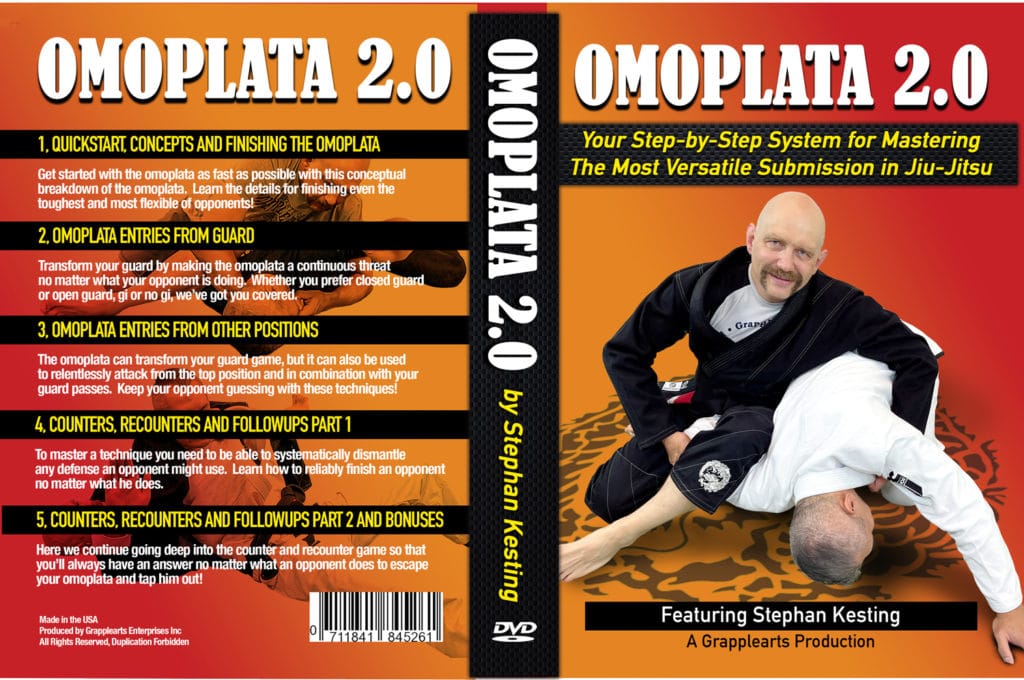A Trigger Position is an alignment of your body and your opponent’s body that immediately invites a specific submission. Once you’re there, all you need to do is pull the metaphorical trigger and – BOOM – you’re in the submission.
This concept makes it easy for you to know when it’s time to attack in jiu-jitsu. Knowing the Trigger Position for a specific submission cuts down on your decision-making time and makes it MUCH faster to go on the offence.
From Omoplata 2.0 here’s an explanation of the Trigger Position concept and examples, including the armbar, the triangle choke, and the omoplata armlock.
Learn to recognize the Trigger Position for every submission that you want to master. Then figure out ways to trick or force your opponent into giving you that position.
Trigger Position Video Recap
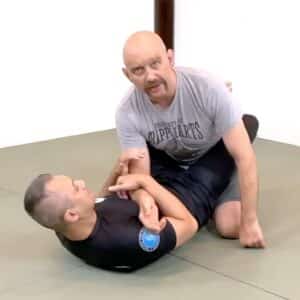
In the photo above I’m bringing my arm across Ritchie’s centerline in the guard. This is a Trigger Position for the armbar.
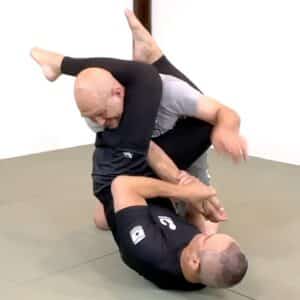
Here Ritchie has swung into the armbar from guard to finish the match. Note that he could also have done other techniques (like take my back or sweep me) but the armbar from guard is the most obvious attack.
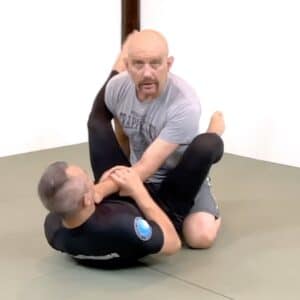
Now I’m giving Ritchie the Trigger Position for the triangle choke by putting my right arm underneath his left leg. Once again, there are multiple things that Ritchie could do, but the triangle choke is the most obvious.
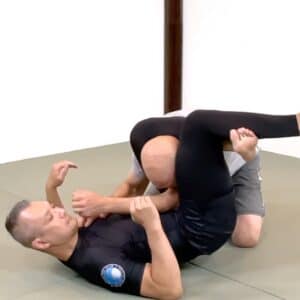
He brings his left leg over my neck and locks his right knee over his left instep. Then he starts making all the little adjustments that make the triangle choke much more powerful and taps me out.
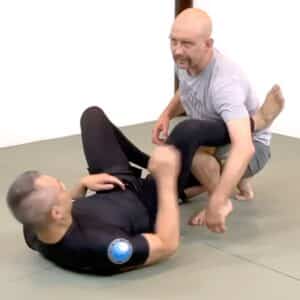
In the above picture I’m draping my left arm around the outside of Ritchie’s right leg. This is the Trigger Position for the omoplata armlock…
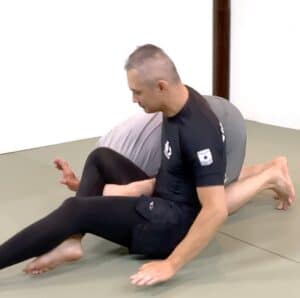
Ritchie swings into position for the omoplata and starts breaking down my posture to finish the submission.
The use of this concept can get pretty sophisticated. For example, each of the four pictures below looks pretty different, but in each I’ve managed to force my opponent into giving me Trigger Position for the omoplata, and now I’m only one or two adjustments away from the attack itself.
(Check out this spinning lasso guard entry to the omoplata on Youtube and see if you can spot how I set up the Trigger Position.)
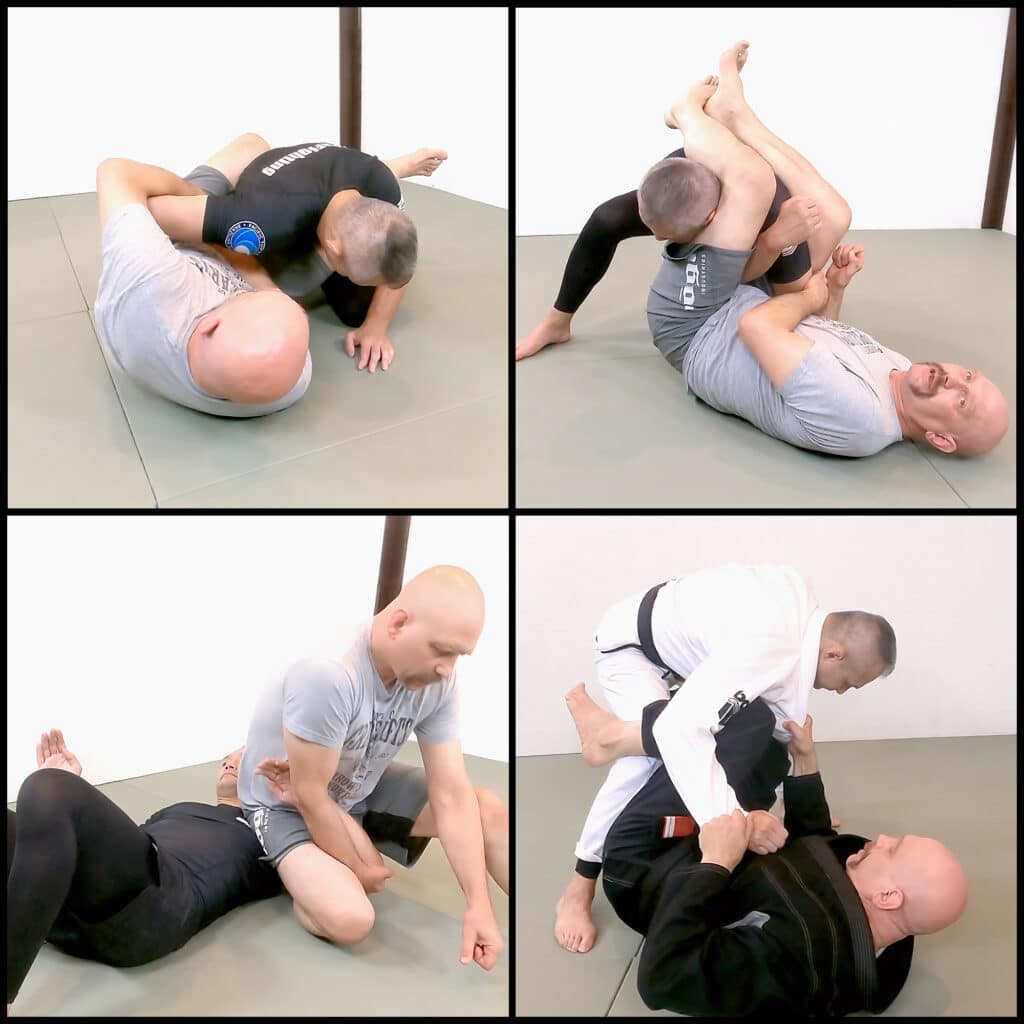
As I said before, figure out what the Trigger Position is for every submission you’re working on, and then find strategies that trick or force your opponent into giving you that specific position and the subsequent attack.
Stephan Kesting
P.S. Thanks to Ritchie Yip for helping with this video and these pictures. Ritchie is a black belt who teaches BJJ and Kickboxing in Burnaby, BC at Infighting Training Center.
P.P.S. The omoplata is the most versatile submission in jiu-jitsu. It’s a submission, it’s a sweep, and a setup for many other sweeps and submissions.
To help you get good at this attack really quickly I’ve put together a step-by-step system for mastering the omoplata in DVD, online streaming, and app based formats that you might want to check out.
This instructional is my super-detailed breakdown of one of my very favorite submissions. It’ll change your game.
Click here to check out the Omoplata 2.0 instructional.
The post BJJ Trigger Positions appeared first on Grapplearts.

